Japan Travel: Il Palazzo Imperiale e giardini Imperiali

photo credit: Google Images
Sono stata a Tokyo un paio di volte e uno dei miei posti preferiti in tutta la città sono i giardini imperiali nell’area di Chiyoda. Ogni volta che sono in città, trovo sempre un momento (a volte anche più di uno) per visitare questo incredibile posto, un cuore verde a Tokyo, pieno di storia e tradizione ma circondato dalla modernità di questa frenetica città.
Il Palazzo Imperiale di Tokyo (皇居 Kōkyo, letteralmente “Residenza Imperiale”) è la residenza principale dell’Imperatore del Giappone. Con i suoi grandi parchi si trova nel cuore del quartiere di Chiyoda e contiene edifici tra cui il palazzo principale (宮殿 Kyūden), le residenze private della famiglia imperiale, un archivio, musei e uffici amministrativi.
L’attuale palazzo è costruito sul sito del vecchio castello Edo costruito dallo shogun Tokugawa Ieyasu e l’area totale, compresi i giardini, è di 1,15 chilometri quadrati.
La storia
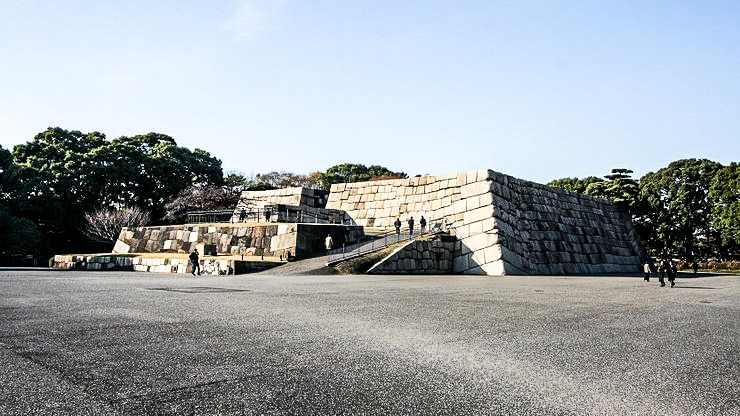

photo credit: japan-guide.com
Castello di Edo
Costruito da Tokugawa Ieyasu e assegnato come residenza della famiglia Tokugawa, dopo la fine dello shogunato e la restaurazione Meiji, l’imperatore lasciò il palazzo imperiale di Kyoto e si trasferì nel castello di Edo. Questa divenne la sua nuova residenza e fu ribattezzata con il nome di Castello di Tōkei (東京城 Tōkei-jō), nello stesso periodo, anche Tōkyō era stata chiamata Tōkei.
Il 5 maggio 1873, il palazzo Nishinomaru (precedentemente residenza dello shogun) fu distrutto da un incendio e nel 1888 fu costruito il nuovo Palazzo Imperiale (宮城 Kyūjō).
L’organizzazione no-profit “Rebuilding Edo-jo Association” (NPO 法人 江戸城再建) fondata nel 2004 ha l’obiettivo di una ricostruzione storicamente corretta almeno del principale mastio. Questo gruppo progetta di raccogliere donazioni e firme su una petizione a sostegno della ricostruzione della torre del vecchio castello in modo che la capitale possa avere un edificio simbolico.


photo credit: Wikipedia, thetraveltester.com
Il vecchio palazzo
Nell’era Meiji, la maggior parte delle strutture del castello di Edo scomparve. Alcuni sono stati rimossi per far posto ad altri edifici mentre altri sono stati distrutti da terremoti e incendi.
In questo caso, i ponti doppi di legno (二重橋 Nijūbashi) sopra il fossato furono sostituiti con ponti di pietra e ferro mentre gli edifici del Palazzo Imperiale costruiti nell’era Meiji erano fatti di legno.
Quando ti trovi per la prima volta il Palazzo Imperiale, vieni improvvisamente trasportato nell’architettura giapponese classica e tradizionale, ma se avete la possibilità di camminare in quelle sale coprirete che all’interno, il palazzo è un misto della moda giapponese di allora ed elementi europei. Sedie occidentali, tavoli e tende pesanti arredano gli spazi, i pavimenti delle sale comuni hanno parquets o tappeti mentre gli spazi residenziali usavano tatami tradizionali.
Gli ospiti erano ricevuti nella sala delle udienze principale, che era la parte centrale del palazzo. Il suo spazio era più di 223 tsubo (circa 737,25 m2) e il soffitto era in tradizionale stile giapponese, mentre il pavimento era fatto di parquet. Per il tetto, è stato mantenuto uno stile simile al Palazzo Imperiale di Kyoto, tuttavia fu coperto con lastre di rame ignifugato piuttosto che le tradizionali lastre di cipresso giapponesi.
Altri edifici in cemento furono aggiunti nel tardo periodo Taishō e all’inizio del periodo Shōwa, come il quartier generale del Ministero della casa imperiale e il Consiglio privato.
Durante la Seconda Guerra Mondiale, la notte del 25 maggio 1945, la maggior parte delle strutture del palazzo imperiale furono distrutte durante il bombardamento incendiario di Tokyo da parte delle forze alleate. A causa di ciò, una nuova sala principale del palazzo (宮殿 Kyūden) e le residenze furono costruite nella parte occidentale del sito negli anni ’60 e questa zona fu ribattezzata Residenza Imperiale (皇居 Kōkyo) mentre la parte orientale fu ribattezzata East Garden (東 御苑 Higashi -Gyoen) e divenne un parco pubblico nel 1968.
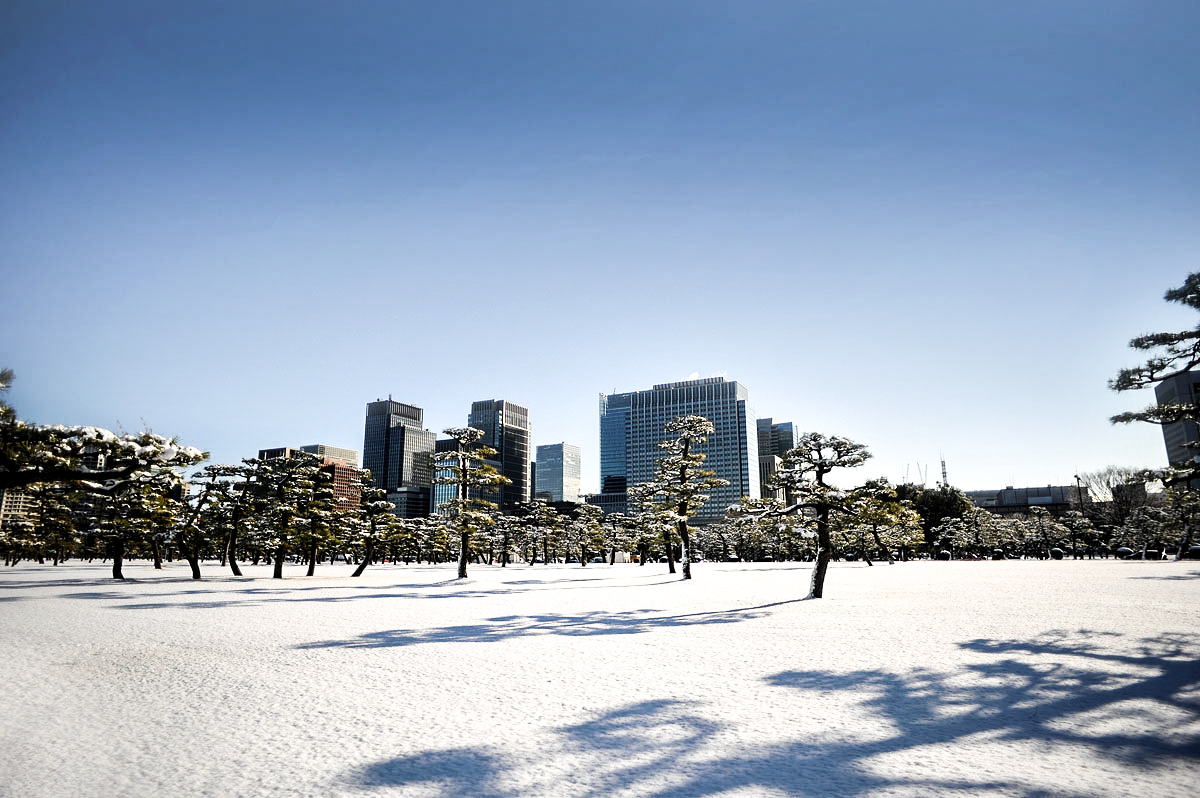
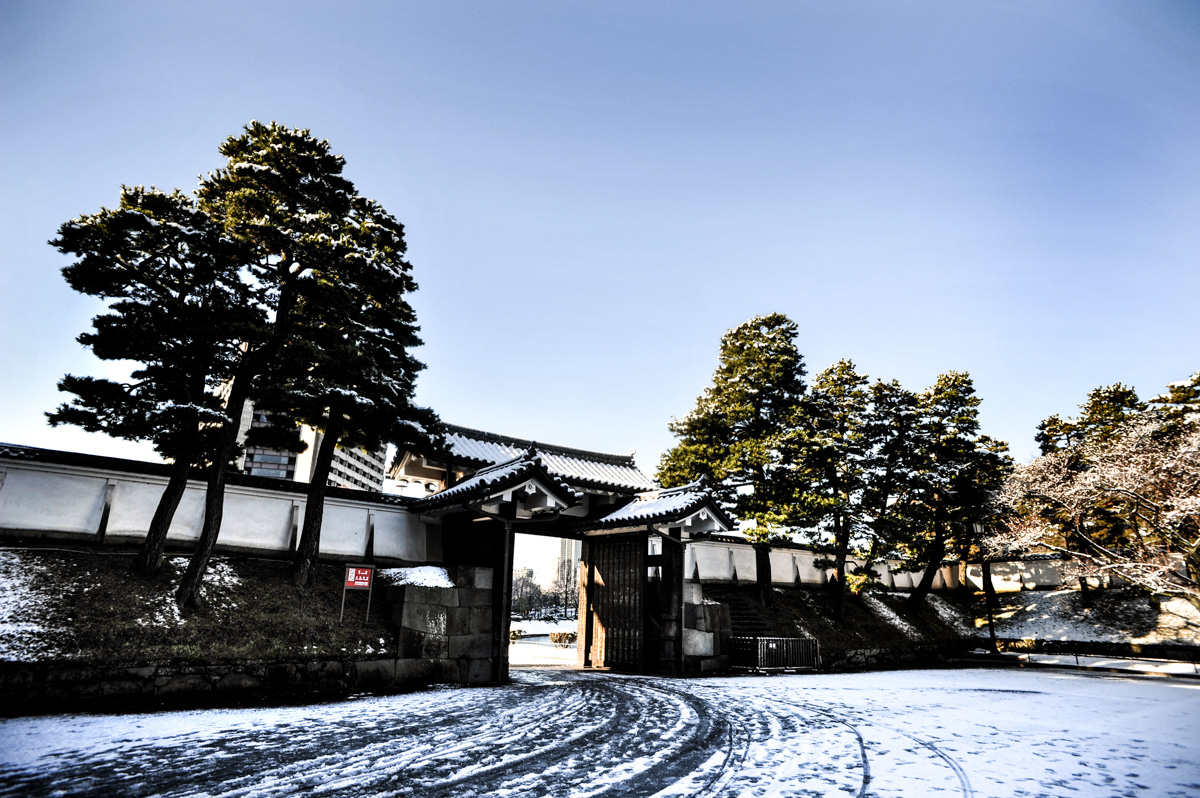
photo credit: tokyobling.wordpress.com
Il palazzo imperiale oggi
Dopo essere sopravvissuto alla definizione del momento storico, il moderno palazzo Kyūden (宮殿) fu progettato per varie funzioni giudiziarie imperiali e la reception si trova nella vecchia sezione Nishinomaru del palazzo.
Ad oggi, la residenza dell’attuale imperatore e imperatrice si trova nei giardini Fukiage ed è ora su una scala molto più modesta, rispetto a quella che era originariamente.
Ad eccezione dell’Imperial Household Agency e dei Giardini Imperiali, il palazzo è generalmente chiuso al pubblico, ad eccezione di visite guidate riservate da martedì a sabato. Ogni anno nuovo (2 gennaio) e al compleanno dell’imperatore, al pubblico è permesso di entrare attraverso il Nakamon (porta interna) dove si riuniscono nella Piazza Kyote Totei davanti alla Sala Chowaden. In questa occasione, la Famiglia Imperiale appare sul balcone davanti alla folla e l’Imperatore di solito fa un breve discorso di saluto, ringrazia gli ospiti e augura loro buona salute e benedizioni.
I giardini
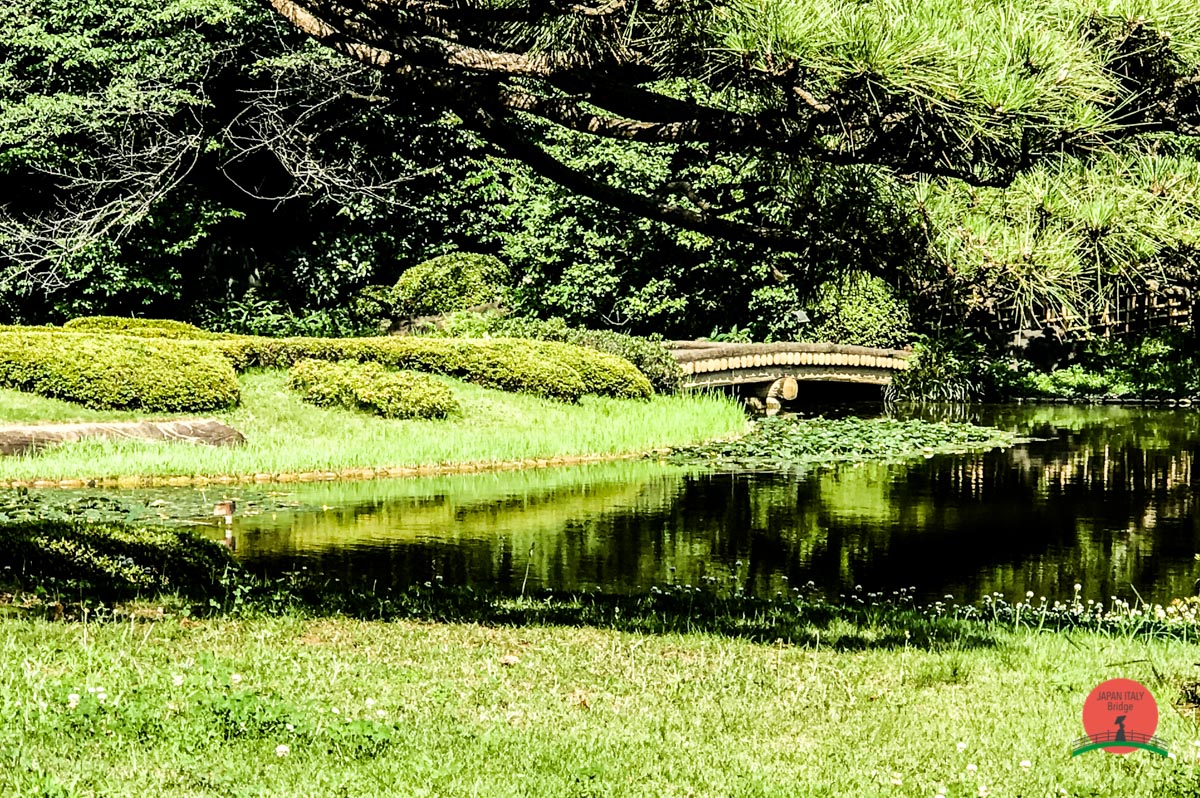

Fukiage Garden
Questo è probabilmente il giardino più antico del complesso. Il giardino Fukiage ha portato questo nome sin dal periodo Edo ed è qui che vive la famiglia imperiale.
Il Fukiage Ōmiya Palace (吹 上 大 宮 御所 Fukiage Ōmiya-gosho) nella parte settentrionale era originariamente la residenza dell’imperatore Showa e dell’imperatrice Kōjun e si chiamava Fukiage Palace. Dopo la morte dell’imperatore nel 1989, il palazzo fu ribattezzato Palazzo Fukiage Ōmiya e fu la residenza dell’Imperatrice Dowager fino alla sua morte nel 2000.
Qui potete anche trovare i Tre Santuari del Palazzo (宮中三殿 Kyūchū-sanden), parti delle Regalie Imperiali del Giappone e il santuario svolge un ruolo religioso nelle incoronazioni e matrimoni imperiali.


photo credit: Wikipedia
Tōkagakudō (Music Hall)
Il Tōkagakudō (桃華楽堂, Peach Blossom Music Hall) si trova ad est dell’ex mastio principale del castello di Edo nella zona Honmaru ed è stato costruito per commemorare il sessantesimo compleanno dell’imperatrice Kōjun il 6 marzo 1963. L’edificio di in ferro e cemento copre un’area totale di 1.254 m2 e ognuna delle sue otto pareti esterne è decorata con tessere di mosaico diversamente progettate.
Giardino Ninomaru
Se volete dare una rapida occhiata all’intera vegetazione giapponese, è qui che dovreste andare, dato che gli alberi simbolici che rappresentano ogni prefettura sono piantati nell’angolo nord-occidentale della cinta di Ninomaru. Tali alberi sono stati donati da ogni prefettura e ci sono in totale 260 alberi, coprendo 30 varietà.

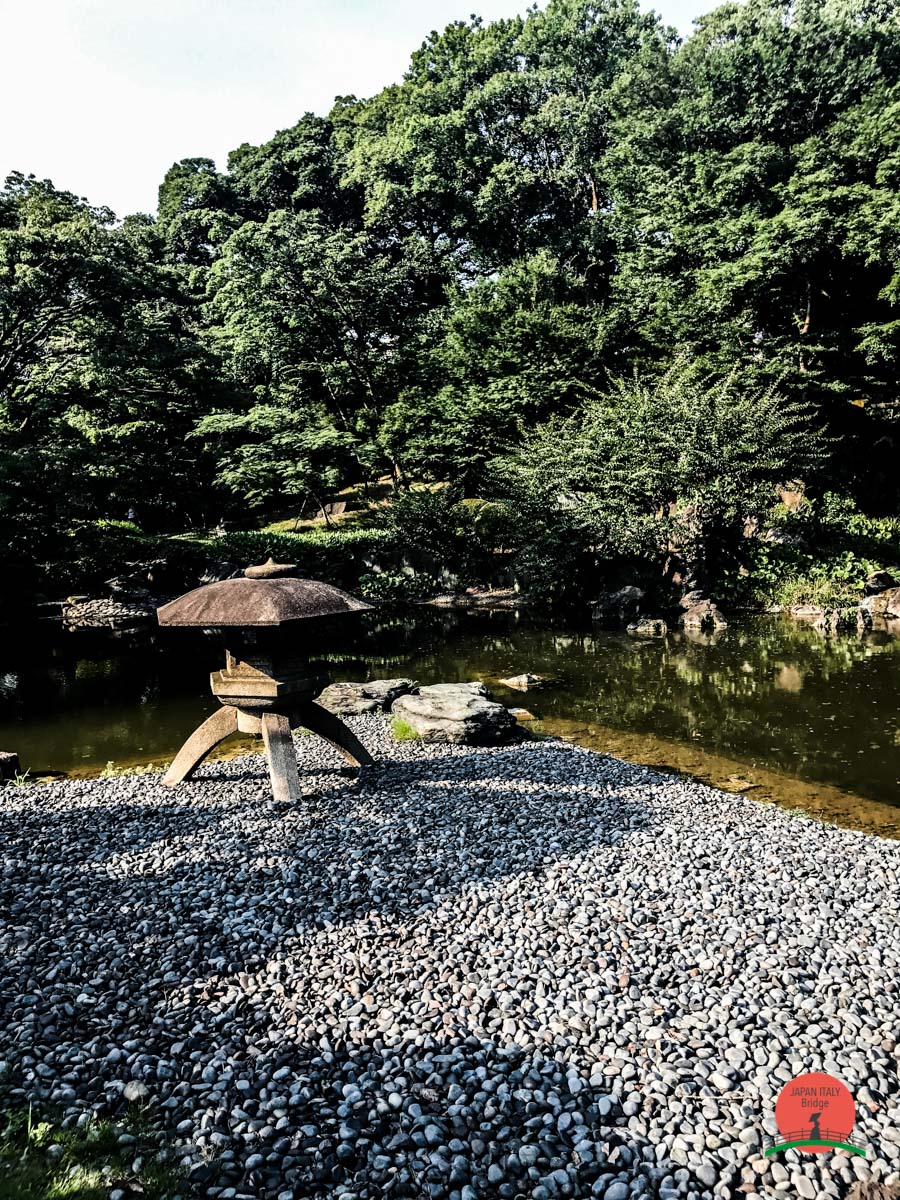
Kitanomaru
Situato nella parte settentrionale del castello di Edo, questo parco pubblico è famoso per essere la casa del Nippon Budokan Hall, uno dei più grandi siti per concerti, eventi sportivi e altro ancora.
Qui potete anche trovare un monumento in bronzo dedicato al principe Kitashirakawa Yoshihisa (親王白川宮能久親王 Kitashirakawa-no-miya Yoshihisa-shinnō)
East Garden
Ultimo ma non meno importante, gli East Gardens, i più famosi di questo complesso. Qui si trova la maggior parte degli edifici amministrativi del palazzo e comprende le ex zone di Honaro e Ninomaru del castello di Edo, per un totale di 210.000 m2. Situato sul terreno dell’East Garden troviamo l’Imperial Tokagakudo Music Hall, il Music Department of the Board of Ceremonies of the Imperial Household, Archives and Mausolea Department Imperial Household Agency, strutture per le guardie come il dojo Saineikan e il Museo delle collezioni imperiali.
I lavori di costruzione iniziarono nel 1961 con un nuovo laghetto nel Ninomaru, così come la riparazione e il restauro di vari edifici e strutture del periodo Edo. Il 30 maggio 1963, l’area fu dichiarata dal governo giapponese una “reliquia storica speciale” ai sensi della legge sulla protezione delle proprietà culturali.


Questo è in realtà il mio preferito e ogni volta che vengo a Tokyo, cerco sempre di passare un pomeriggio qui. È uno dei posti più visitati della città, è vero, ma nonostante tutti i turisti che passeggiano, c’è questa magica atmosfera di tranquillità nell’aria ed è il posto perfetto per sedersi, leggere un libro, scrivere sul vostro quaderno tutte le avventure che avete avuto in questa incredibile città e assaporare tutta la storia che questo luogo ha vissuto.
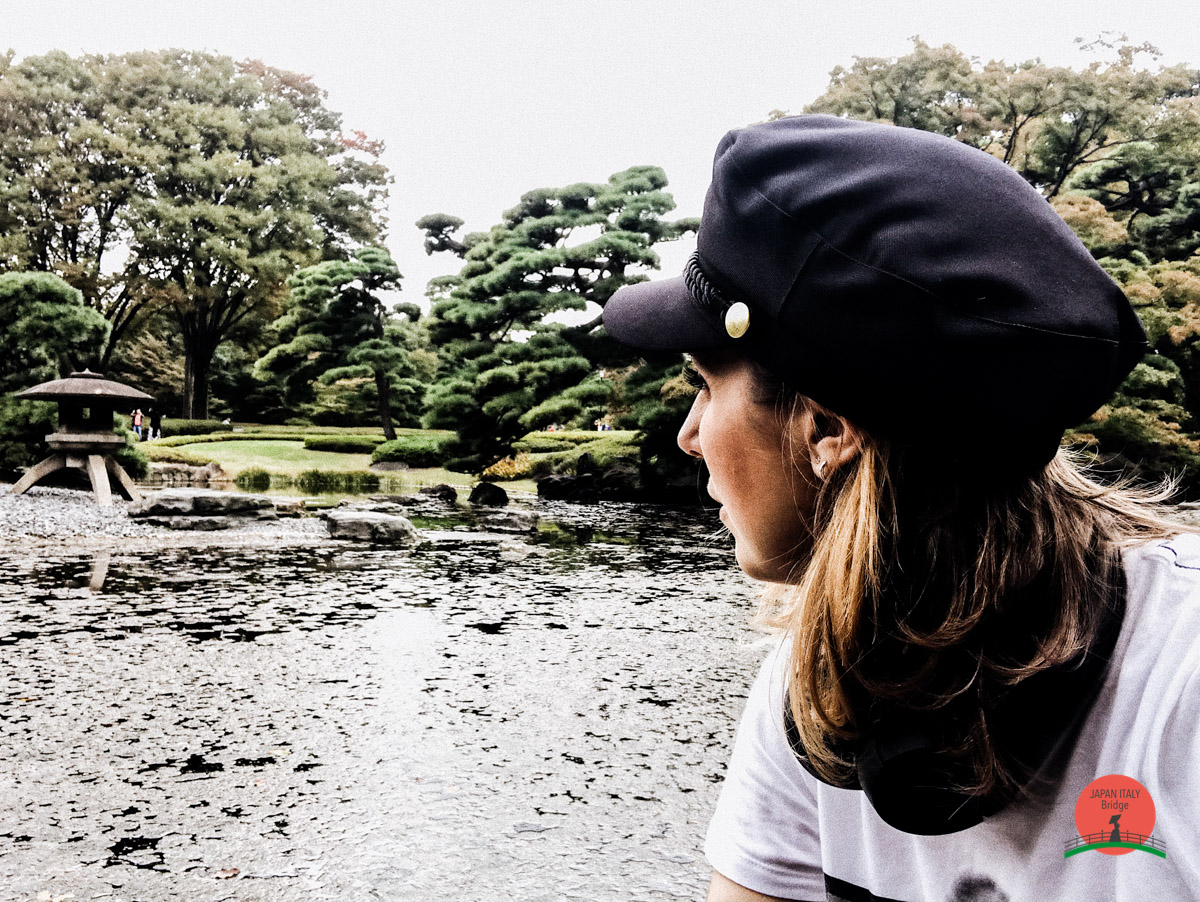
Accesso
L’ingresso di Otemon agli East Gardens è a pochi passi dalla stazione di Otemachi sulle linee Chiyoda, Tozai, Marunouchi, Hanzomon e Mita. Può anche essere raggiunto in 10-15 minuti a piedi dalla stazione di Tokyo.
Orari di apertura
Dalle 9:00 alle 16:30 (fino alle 17:00 da metà aprile ad agosto, fino alle 16:00 da novembre a febbraio). L’ammissione termina 30 minuti prima della chiusura.
Chiuso
Il lunedì, il venerdì, il nuovo anno (dal 28 dicembre al 3 gennaio) e alcune occasioni speciali. Se il lunedì o il venerdì è una festa nazionale, i giardini sono chiusi il giorno successivo.
Ammissione
Gratuita
Condividi:
- Fai clic per condividere su Facebook (Si apre in una nuova finestra)
- Fai clic qui per condividere su Twitter (Si apre in una nuova finestra)
- Fai clic qui per condividere su Tumblr (Si apre in una nuova finestra)
- Fai clic qui per condividere su Pinterest (Si apre in una nuova finestra)
- Fai clic per condividere su Telegram (Si apre in una nuova finestra)
- Fai clic per condividere su WhatsApp (Si apre in una nuova finestra)
- Fai clic qui per condividere su Reddit (Si apre in una nuova finestra)
- Fai clic qui per stampare (Si apre in una nuova finestra)






